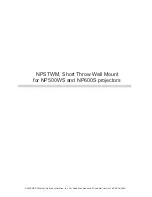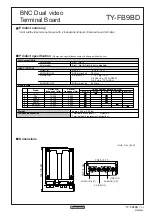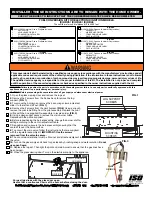
Velocity > Vel2:
This condition is true when the accelerometer-based estimate of upward velocity is higher
than the Vel2 value. Vel2 can be set between -48 feet/second and 1998 feet/second, in 2
ft/second increments. This setting is one way to check to make sure that the rocket is
flying as expected before performing a high-speed sustainer ignition. If the rocket is in
the middle of a tumbling breakup, the velocity will be lower than expected
Acceleration > Accel1 and Acceleration < Accel2:
This condition is true when the accelerometer’s reading is greater than the Acc1 value or
less than the Acc2 value, respectively.
Acc1 and Acc2 can be set in the range from -50Gs to +50Gs, in increments of 0.1 Gs.
These triggers are useful for detecting staging charges, deployment charges, motor burns,
and landing events. Note that there are lots of different flight events that can cause
changes in the acceleration values, so it’s important to combine this trigger with other
conditions if used. For example, you could use this trigger to detect landing for a chute
disconnect device, by looking for acceleration greater than 3 Gs. For this application,
you would also need to prevent a premature deployment by setting the following
additional conditions for the trigger: the altitude < AGL1, pressure increasing, velocity <
Vel1 to avoid a premature deployment. New for the Raven2 (not available with the
original Raven) is a third altitude trigger that makes it easier to set up the landing
detection and the main deployment using the same altimeter (See Height Above Pad <
AGL3)
Time < user timer value and Time > user timer value:
This condition is true when the elapsed time from liftoff detection is less than, or greater
than, the user-settable timer threshold, TVal. TVal can be set from 0 to 51.2 seconds, in
0.02 second increments. The time > Tval setting can be used as a simple timer, or in
combination with other conditions to make sure that the rocket has gotten past the initial
low-altitude part of the flight. Note that liftoff detection may occur a fraction of a second
after 1
st
motion.
Height Above Pad > AGL2
This condition is true when the height above the pad is greater than the user-settable
altitude AGL2. AGL2 can be set between 0 and 32736 feet, in increments of 32 feet.
This trigger is useful for air start ignition of motors, as it can be combed with the time <
TVal to ensure that the rocket is on its way to a nominal flight before igniting the next
motor. For example, if a simulation predicts that the b sustainer should achieve
7000 feet within 6 seconds, you could set the AGL2 to 6000 feet and the Tval to 6
seconds to be assured that the sustainer won’t fire if the rocket is tumbling or has a flight
angle far from vertical. To ensure that the measured pressure won’t be affected by Mach
transition transients, you could also check to make sure that the pressure is decreasing
and the velocity is < 1000 ft/second.
Height Above Pad < AGL3 (used for the default main backup channel)
This condition is true when the height above the pad is greater than the user-settable
altitude AGL3. AGL3 can be set between 0 and 32736 feet, in increments of 32 feet.
This trigger is useful for triggering an event below the main altitude. For example, the
main deployment altitude could be set to 1000 feet, and a backup main deployment at 800






























